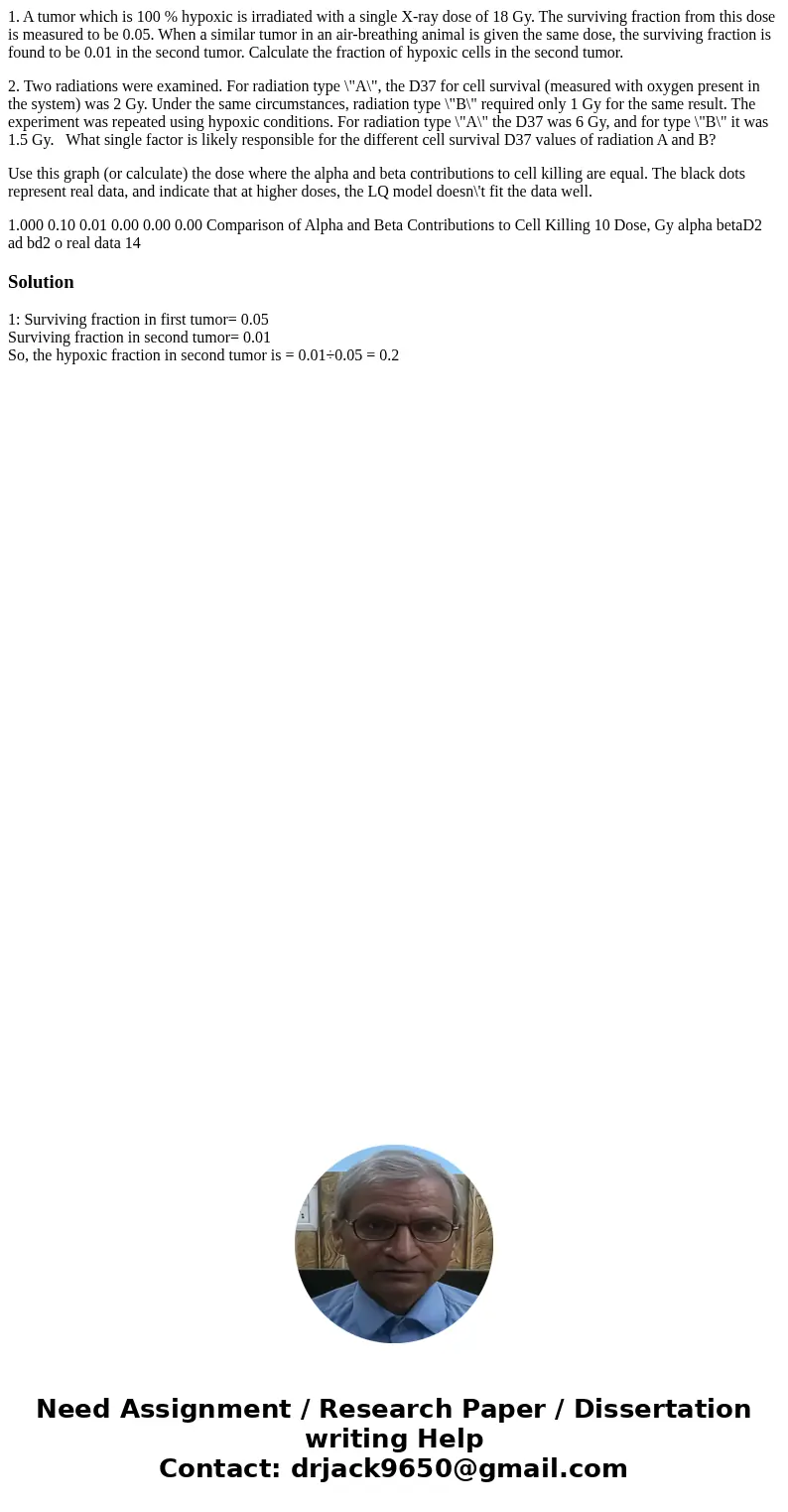1 A tumor which is 100 hypoxic is irradiated with a single
1. A tumor which is 100 % hypoxic is irradiated with a single X-ray dose of 18 Gy. The surviving fraction from this dose is measured to be 0.05. When a similar tumor in an air-breathing animal is given the same dose, the surviving fraction is found to be 0.01 in the second tumor. Calculate the fraction of hypoxic cells in the second tumor.
2. Two radiations were examined. For radiation type \"A\", the D37 for cell survival (measured with oxygen present in the system) was 2 Gy. Under the same circumstances, radiation type \"B\" required only 1 Gy for the same result. The experiment was repeated using hypoxic conditions. For radiation type \"A\" the D37 was 6 Gy, and for type \"B\" it was 1.5 Gy. What single factor is likely responsible for the different cell survival D37 values of radiation A and B?
Use this graph (or calculate) the dose where the alpha and beta contributions to cell killing are equal. The black dots represent real data, and indicate that at higher doses, the LQ model doesn\'t fit the data well.
1.000 0.10 0.01 0.00 0.00 0.00 Comparison of Alpha and Beta Contributions to Cell Killing 10 Dose, Gy alpha betaD2 ad bd2 o real data 14Solution
1: Surviving fraction in first tumor= 0.05
Surviving fraction in second tumor= 0.01
So, the hypoxic fraction in second tumor is = 0.01÷0.05 = 0.2

 Homework Sourse
Homework Sourse